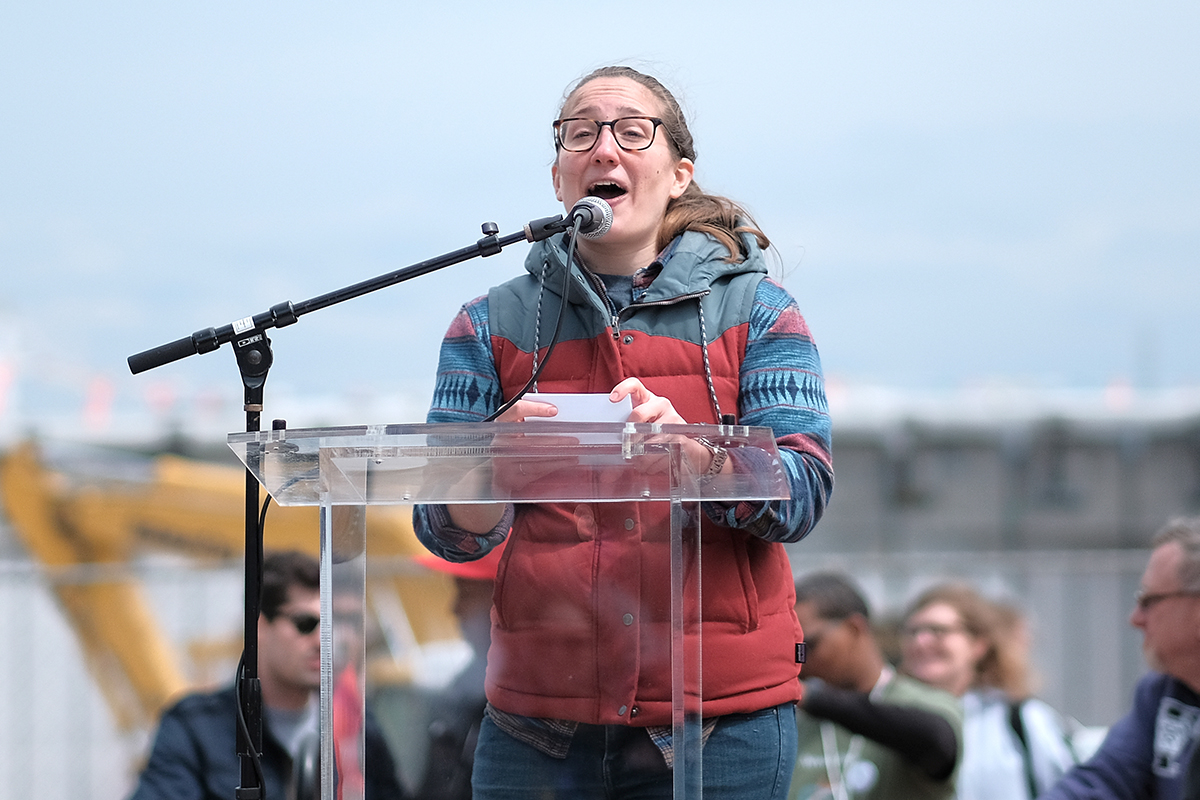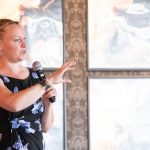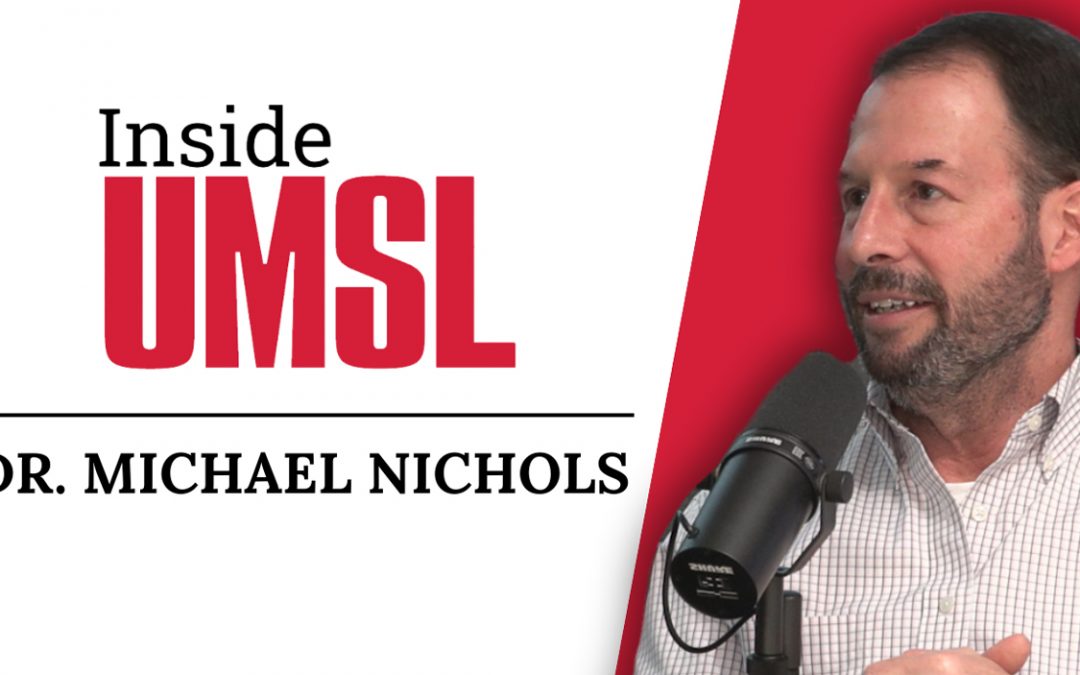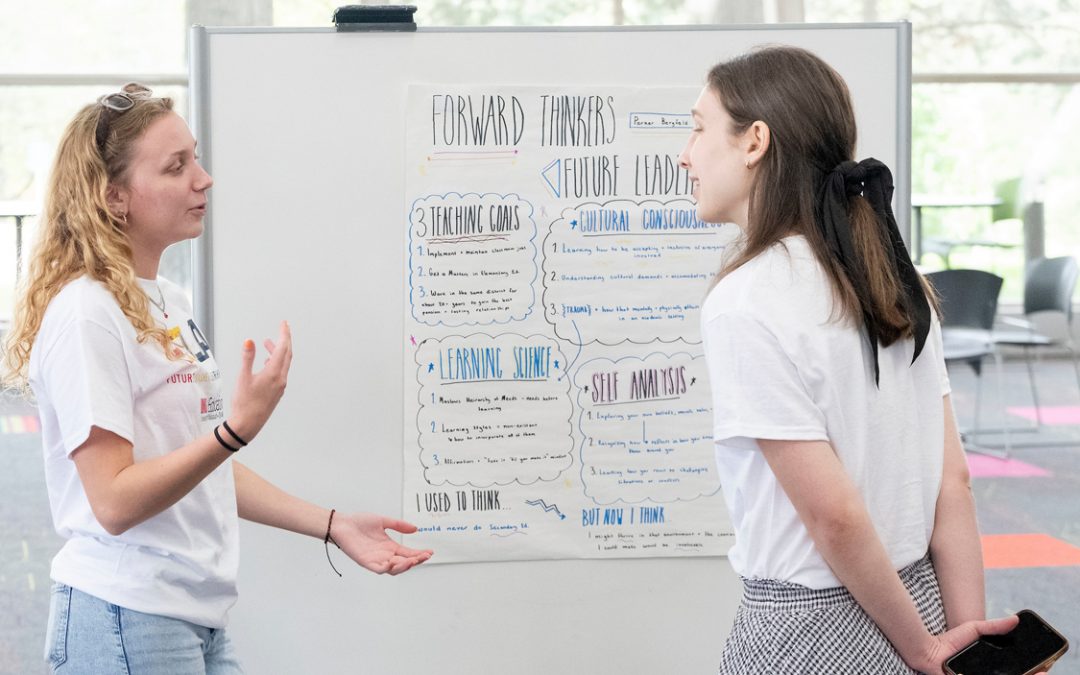
Attendees (from left) Christina Baer, Sage Rohrer, Robbie Hart, Sara Ricárdez, Samoa Asigau and Mari Jaramillo represent the UMSL Department of Biology at the March for Science on Earth Day, April 22. (Photo courtesy of Mari Jaramillo)
St. Louis supporters of science and scientists themselves stepped out from behind their textbooks, theories and microscopes and took to the streets in the March for Science on Saturday in downtown St. Louis.
Thousands of participants marched from Union Station down Market Street to Luther Ely Smith Square in front of the Gateway Arch. Among them were about 100 University of Missouri–St. Louis students and faculty who felt passionate about supporting science.
“Science creates jobs, saves people’s lives and makes the world a better and safer place,” said Matthew Stark, a chemistry graduate student who helped organize one group of UMSL marchers.
They marched for many issues, including threats to education, scientific research, women’s health and vaccines. But two key issues loomed large for marchers – issues that walked the political line at the nonpartisan event.

Emma Young, a doctoral student in biology at UMSL, was one of the featured speakers at the March for Science in St. Louis. She addressed the importance of collaboration in the field and offered up UMSL’s Whitney R. Harris World Ecology Center as a prime example. (Photo by Satsawat Visansirikul, a UMSL doctoral student in chemistry)
First, acknowledging climate change as real, which was an appropriate hot topic for the march that took place on Earth Day, April 22.
“Climate change is going to be the largest humanitarian and environmental problem of the next few hundred years,” said Emma Young, a UMSL doctoral student in biology who was a featured speaker at the event. “The way we react now is going to determine the severity of the problems that future generations face, and we are currently doing much too little.”
Many climate change supporters were fueled by the recent proposed slash of the U.S. Environmental Protection Agency’s funding. President Donald Trump proposed a 31 percent budget cut for the EPA and scrubbed the phrase “climate change” from the official White House webpage.
“This is our way of responding to political leaders and big businesses that publicly dismiss scientific facts and evidence to promote chaos and disbelief among people and ultimately favor their own agendas and economic interests,” said Mari Jaramillo, a UMSL doctoral student in biology who marched.
Jaramillo’s response gets to the second key issue for marchers – defending science as fact.
“Science is our best way of knowing what’s right, and of separating fact from hunches or from what we might wish were true,” said Patty Parker, the E. Desmond Lee Professor of Zoological Studies and interim director of the Whitney R. Harris World Ecology Center at UMSL. “All scientists will tell you about that time that the evidence from their experiments did not support their predictions, and their thinking had to change because of it. That is science – it’s the process that guides you toward truth.”

E. Desmond Lee Professor of Zoological Studies Patty Parker displays the signs with which she, her daughter and granddaughter marched. (Photo by Eike Bauer, an associate professor of chemistry at UMSL)
Stark builds off of that thought, promoting a functional relationship of science and politics.
“Science is how we solve problems, and politics is how we implement those solutions in society,” Stark said. “They go hand in hand. When the foundation of our decision-making strays from science, politics cannot function effectively for the betterment of society.”
At the march, there were beanie caps knitted to look like brains, people dressed in lab coats and, of course, many, many signs.
Parker marched alongside her daughter and 4-year-old granddaughter. They held one sign that said in big letters “STAY CURIOUS” and another which read “WE NEED SCIENCE” on one side with the words “food,” “energy,” “medicine,” “technology,” “plants” and “animals” surrounding the message. The other side read “SCIENCE NEEDS US” with the words “democrats,” “republicans,” “believers,” “non-believers,” “girls,” “boys,” and “LGBTQ+” surrounding the message.
Chants sounded throughout the street.
“Science not silence.”
“What do we want? Real science. When do we want it? After peer review.”
“When science and facts are under attack, what do we do? … Stand up, fight back!”
The march culminated with a few addresses from local science leaders, including Young. The Harris Center student scholar spoke about the importance of collaboration in science and the integration of so many people and minds that help bring about scientific discoveries.
She presented the center as a key example of this. The Harris Center, housed at UMSL, has a partnership with the Saint Louis Zoo, the Missouri Botanical Garden and the university that supports graduate and undergraduate research in science.
“I’m really grateful to the march planners for including me alongside so many other distinguished speakers,” Young said. “That’s part of the reason I love the scientific community – the idea that a graduate student could bring something to the table at an event like this.”
The St. Louis March for Science was one of nine science-themed rallies in Missouri and more than 600 nationwide.
For more local coverage, check out KSDK (Channel 5), KMOV (Channel 4), KTVI (Channel 2), the St. Louis Post-Dispatch, St. Louis Public Radio and the Riverfront Times.















